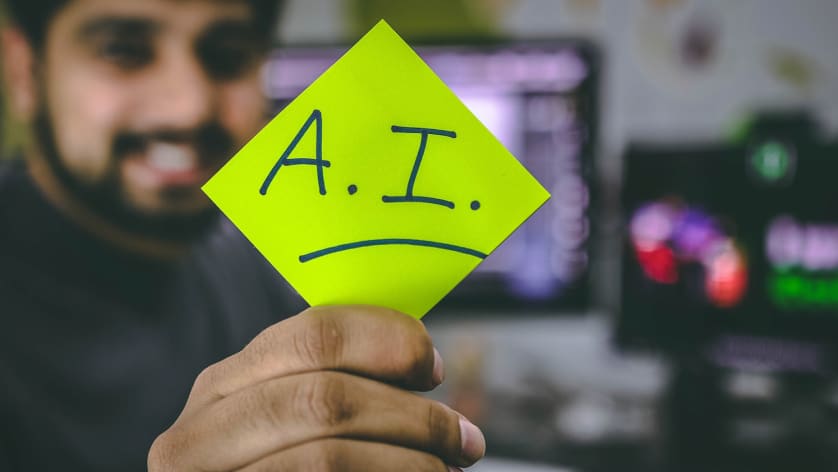10 steps to becoming a data scientist

Data Science is one of the fastest-growing careers in the technology industry - it is an interdisciplinary field that helps us analyze and understand the world around us. With the booming job market and the increasing dependence of businesses on data-driven solutions, this demand is not slowing down.
Fortunately, no degree is required to become a data scientist. As long as you're open to new things and willing to invest time and effort, you can become a data scientist!
The questions is: Where do you begin?
The internet is full of tutorials on every aspect of data science, from basics of machine learning to natural language processing, audio speech recognition, and all sorts of amazing data science magic. But for a beginner, this wealth of information can be overwhelming and lead someone to give up before they've even started.
You need a structured roadmap that clearly lays out what you need to learn (and in what order) to become a data scientist, along with the skills you need to improve your data science learning journey.
1. Programming
If you are new to technology, programming is the first starting point. Currently, the two programming languages that most data scientists use are Python and R.
Python is a beginner-friendly programming language which makes it a great tool to start learning data science. Due to the popularity of Python, there are many resources available to learn it.
If you opt for R, Coursera and edX both have excellent courses which you can listen to at no charge.
Some of you may already know how to program, and may be switching from another technical field to data science. If this is the case, you can skip this step and move on to the next one.
2. Databases
Data Science can be thought of as an art form – telling a story using data – but you must be able to actually access the data to tell your story. In other words, when working on a data science project, you will need data to analyze, visualize, and create a valid project. This data is often stored in a database.
It is important for Data Scientists to be able to interact and communicate effectively with databases. For example, if you have the skills to design a simple database, you can move on to the next level.
To be able to communicate with a database, you need to know its language: SQL (Structured Query Language) is used to talk to all types of databases.
3. Math
The core of data science is mathematics. In order to understand how the various concepts of data science, you need to understand the mathematics behind it, including the basics of probability theory, statistics and linear algebra.
Most of the tools you use in your career will make implementing math itself unnecessary in your projects, but you still want a certain understanding of the basic principles.
4. Version control
Version control is an essential skill to learn for any software developer or data scientist.
If you are working on a data science project, you will need to write various code files, analyze datasets, and collaborate with other data scientists. All code changes must be managed through version control.
Git is a version control system that helps developers keep track of changes to their codebase. It can be used to coordinate work between multiple developers, or simply to track changes made by a single developer.
Although Git is a system, some websites allow easy use of Git without much command line interaction - such as GitHub or GitLab.
5. Data Science basics
Data Science is a very broad term that encompasses many different concepts and technologies. Before diving deep into the big sea of data science, you must first become familiar with some basics.
6. Machine learning basics
By working on your programming skills, refreshing your math, and deepening your understanding of databases, you are now able to begin the fun part: applying what you have learned to create your first project.
Now is the time to get started in machine learning. Here you will learn and explore basic algorithms and techniques such as linear and logistic regression, decision trees, naive bayes and support vector machines (SVM). You will also begin to discover different Python or R packages to organize and implement data.
You will also learn how to clean your data to get more accurate positions and results.
7. Time series- and model validation
It is time to dive deeper into Machine Learning. Your data will not stagnate - it often has something to do with time. Time series are data points that are ordered by time.
Most data sets are taken at consecutive points in time at the same interval, making them time-discrete. Time series show how time changes the data. In this way, you can gain insights into trends, periodicities of data, and predict future behavior of data.
When handling time series, you have to work on two main aspects:
- Analysing time series data
- Predicting time series data
It is not enough to simply create models to predict future behavior - you must also validate the accuracy of the model.
8. Neural networks
Artificial neural networks (ANNs) or neural networks (KNNs) are a biologically inspired programming paradigm that enables a computer to learn from observational data. KNNs began as an approach to mimic the architecture of the human brain in order to perform various learning tasks. In order to resemble the human brain, a KNN contains the same components as a human cell.
KNN contains a collection of neurons - each neuron represents a node that is connected to another node via links. These connections correspond to the biological axon-synapse-dendrite connections. In addition, each of these connections has a weight that determines the strength of a node on another node.
By learning KNN, you will be able to accomplish a wider range of tasks, such as handwritten digit recognition, pattern recognition, and facial recognition.
9. Deep learning
Deep learning is a series of powerful techniques that use the learning power of neural networks.
Neural networks and deep learning can help you solve many problems optimally, including image recognition, speech recognition, and natural language processing.
Meanwhile, there are many Python packages that deal with various aspects of data science.
10. Natural language processing
You are almost at the finish line. The goal line is already in sight! You have worked through many theoretical and practical concepts, from simple mathematics to complex deep learning concepts.
What's next?
The favorite part of many in data science is Natural Language Processing (NLP). Natural Language Processing is an exciting branch of AI that enables the use of machine learning to teach computers to understand and process human languages.
This includes speech recognition, text-to-speech applications (as well as speech-to-text), virtual assistants (such as Siri), and all kinds of different chatbots.
We have reached the end of the road. But every end is also a beginning. It's like that in every other area of technology: there really is no end. The field is evolving rapidly and new things are being explored as you read this article. So being a Data Scientist is a lifelong learning experience.

















